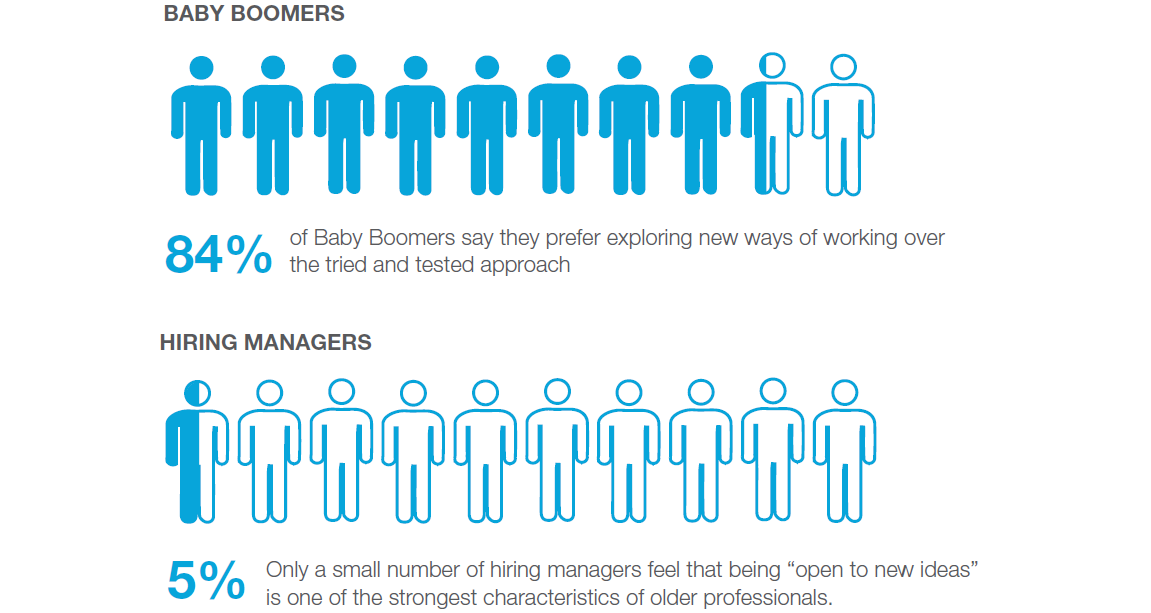Age discrimination still rife in workplaces
One in two hiring managers have witnessed age discrimination in their organisations’ recruitment processes, according to research released today.
The Robert Walters whitepaper, based on a survey of more than 930 hiring managers and 1,500 professionals in Australia and New Zealand, shows many professionals also reported experiencing age discrimination during their careers.
Some 74 per cent of Baby Boomers said they had been discriminated against in a job interview because of their age, followed by 36 per cent of Gen X workers and 34 per cent of Gen Y workers, the research found.
And on top of the 50 per cent of hiring managers who had seen age discrimination in their organisation’s recruitment, 58 per cent said they had seen colleagues overlooked for career progression because of their age.
Gen Y claim to be the most hard done by in this area, with 84 per cent claiming they were discriminated against, followed by 54 per cent of Baby Boomers and 33 per cent of Gen X.
The whitepaper blames unconscious bias, saying an example of this is the disconnect between the different age groups’ stated work preferences, and how hiring managers view them.

Source: Generation gaps? Mythbusting assumptions about age in the workforce
Ageism ‘too salient to ignore’
Another study, conducted by University of South Australia academics, found nearly a third of people had experienced some form of age-related discrimination while employed or looking for work in the past 12 months, according to researcher Justine Irving.
Irving told HR Daily that while studying retirement intentions, the researchers found significant evidence of ageism, which was “so salient that we thought, ‘we can’t ignore this'”.
In their resulting survey of 2,100 people aged 45 years and over, the researchers found many believed they had been on the receiving end of negative assumptions regarding their skills, learning abilities or cognition.
“There was a perception of older workers that because they were a certain age they would struggle to pick up new work systems, particularly technological-based systems,” Irving says.
There was also an assumption they would take longer to learn new things, and work more slowly, she says.
Negative generalisations about employees’ work capacity as they get older is “quite systemic”, she adds, noting ageism isn’t specific to the workforce. “It actually crosses all different levels of society, so I think that in the workplace, you just see it because it’s something that affects people’s ability to maintain and retain work.
“I believe it is slowly changing, but I think it’s just one of those things that will take time.”
The researchers also found participants experienced limited opportunities for training and promotion, Irving says.
“There was an assumption that ‘they’re a bit older, they’re likely to retire in the near future, it’s not something they would be interested in’.”
Participants reported that when they were asked to act in management or supervisor roles, they were often not considered for the position permanently – “they were always looked at as temporary or stop gaps, rather than actually being considered as somebody appropriate for that role into the future”.
Another finding was that when people decided to change careers or move state, for example, and had long work histories, higher education levels, and extensive experience and qualifications, they would suddenly “hit a wall” in their careers.
“So they would put their applications in, everything would go along swimmingly, until they got to the interview stage, and they said that they would see the [recruiters’] faces change once they saw them, and they put that down to their age,” Irving says.
“A lot of recruiters would tell them, ‘oh you weren’t considered, I’m sorry, because you’re overqualified or too experienced’, but how these people interpreted that – because they heard it so often – was ‘this just means you’re too old’.”
To ensure age discrimination doesn’t occur in the workplace, HR professionals must first identify whether employees have conscious, or unconscious, age-related assumptions, Irving says.
“Some people don’t think they have ageist attitudes, but if they looked at the way they judged a particular applicant or looked at their own policies, or their recruitment break up, perhaps they might see there are patterns emerging,” she says.
Educating and training managers to “rebut age-related negative assumptions and generalisations”, and having policies that encourage diversity and inclusion in the workforce, can also help, she adds.
Robert Walters recommends employers help managers and employees identify unconscious bias and factor this into their decision-making.
Source: hrdaily
2424 total views, 1 today






